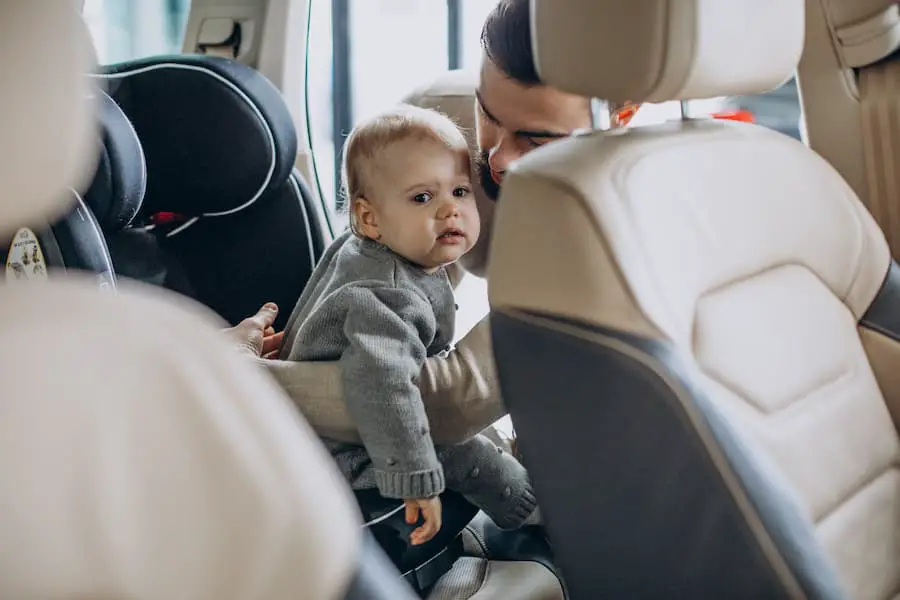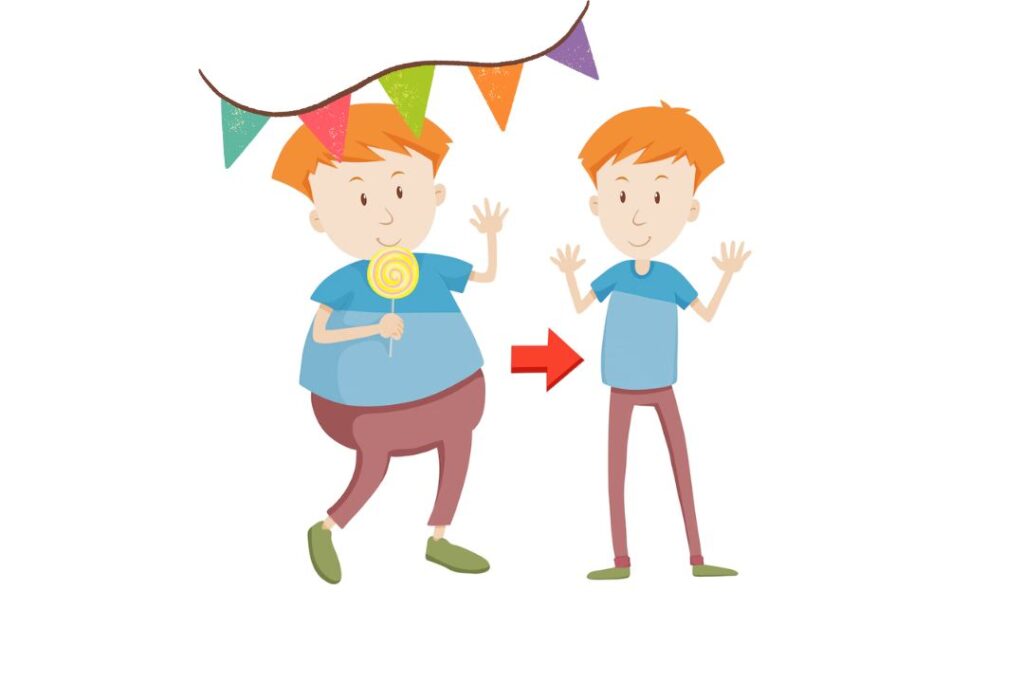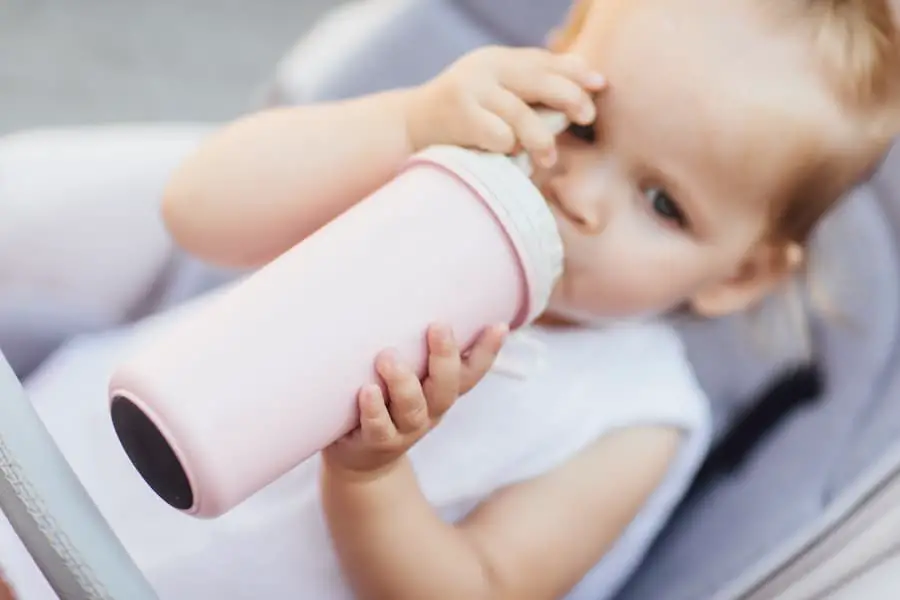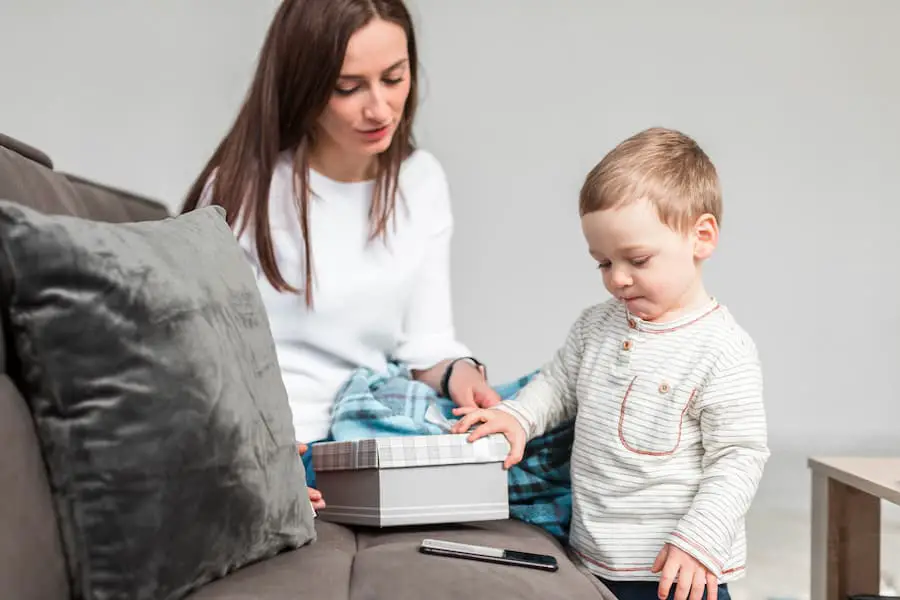Car seat crying is a common phenomenon that many parents grapple with. Despite the pivotal role that car seats play in ensuring the safety of our little ones during travel, it can sometimes be a source of distress for them. Understanding why this happens and finding solutions can be a lifesaver for many parents.
Let’s delve into the reasons behind car seat crying and explore ways to ease this distress for both babies and parents.
Check out best convertible car seat for your child to keep him safe and happy.
Understanding Why Babies Cry in the Car Seat
Reasons Why Babies Hate the Car Seat
Physical Discomfort
A significant reason why babies detest car seats is physical discomfort. Ensuring the car seat is properly installed is the first step to guaranteeing comfort for your baby. It is essential to refer to the manual for both the car seat and your vehicle to follow the installation guidelines correctly.
The seating position of your baby can also influence their comfort level. Tight straps can exert excessive pressure on your baby’s belly, so ensuring they are adjusted appropriately is crucial. Consider the seating angle to avoid positions that cause a hunched posture, which can contribute to your baby’s discomfort. Lastly, evaluate the padding of the car seat to ensure it provides adequate support, creating a more comfortable and pleasant car seat experience for your baby.
Overstimulation
Babies are sensitive to their surroundings, and a car ride can sometimes offer more stimulation than they can handle. The noise, movement, and visual stimuli can be overwhelming, leading to distress and crying. It is essential to create a serene environment that does not overstimulate the baby’s senses.
Feeling of Being Alone
Babies are used to constant physical contact, especially during their early months. Being alone in a car seat can be a new and unsettling experience for them. It is crucial to ensure that they do not feel abandoned during the car ride to prevent crying.
Natural Fussiness
Some babies are naturally fussier and may find the transition to sitting alone in a car seat challenging. Understanding your baby’s nature and finding ways to soothe them can be beneficial in reducing car seat crying.
Motion Sickness
Although more common in toddlers, some babies may experience motion sickness, which can make car rides uncomfortable. Being aware of this possibility and taking steps to reduce motion sickness can be a great help.
Premature or Colicky Condition
Premature and colicky babies often have heightened sensitivity to light, noise, and movement. Being alone in the car seat can expose them to increased motion and noise, further stimulating their senses and potentially causing them to dislike the car seat. Understanding their heightened sensitivities and finding ways to mitigate them can be a lifesaver.
Toddlers and Car Seat Protests
As babies grow into toddlers, they develop new physical skills, such as walking, which can make them dislike the feeling of being restrained in a car seat. It is normal for toddlers to protest against using car seats. Giving your child a sense of control can help. Offering them the option of getting into the car seat themselves or having you place them in it can sometimes ease the protest.
Avoid using bribes, as this only rewards their protest and teaches them that they can negotiate limits with you. Instead, give your child a choice about something they can bring in the car, such as a snack, a book, or a small toy, to keep them entertained and engaged.
Solutions and Tips for Parents
When Will the Crying Stop?
As babies grow older, they tend to outgrow the fussiness they feel in the car seat. However, it is important to note that some children may never develop a liking for being strapped into a car seat. Despite this, enforcing the car seat rule is non-negotiable for safety reasons.
Communicating with your child calmly and reassuringly, letting them know that you understand their dislike but emphasizing the importance of safety, can gradually build their understanding and acceptance over time.
Tips to Calm Your Fussy Baby in the Car Seat
Preparing the Baby Before the Ride
Before securing your baby in the car seat, try placing them on their back on a play mat or in their crib with some soothing music or a lullaby to help calm them. Ensuring your baby has a fresh diaper and is dressed in comfortable clothing can also prevent discomfort during the ride. Assess factors such as lighting and temperature to create a comfortable environment for your baby.
Health Check
If your baby was fussy at home and continues to cry in the car seat, it might be worth checking if there is an underlying health issue causing discomfort. Consulting a healthcare professional for further evaluation and guidance can be beneficial.
Familiarizing the Baby with the Car Seat
Encourage your baby to spend time sitting and playing in the car seat while it is still inside the house. This familiarizes them with the seat and can help them feel more comfortable and at ease during car rides.
Utilizing Music
Depending on the time of day and your child’s mood, music can sometimes help prevent crying in the car. Instrumental and calm music can help soothe them to sleep, especially during nap time or bedtime.
Toys and Mirrors
Consider hanging a soft, covered mirror within your baby’s view in the car. This can serve as a source of entertainment and engagement for your little one. When choosing toys for the car, opt for soft toys to ensure safety and comfort during the ride.
Staying in Sight
If you believe that your baby is feeling unsettled because they can’t see you, make an effort to stay visible and provide reassurance. Engaging with them by talking, singing, or playing together can provide the comfort they need to settle down and feel more at ease during the car ride.
Tips to Keep Moms Calm
In stressful situations where your baby is upset and resistant to being placed in the car seat, remaining calm and composed is vital. Taking a moment to calm yourself before attempting to secure your baby in the car seat can help. Visualize inhaling a sense of calm and repeat a peaceful mantra to yourself, such as “peace begins with me.” Being patient and remembering that this phase will pass can help you navigate this challenging time with a positive mindset.
What People Also Ask
What are the signs of an uncomfortable baby in a car seat?
Identifying signs of discomfort in a baby while they are in a car seat can be the first step in ensuring a smoother ride for both the baby and the parents. Some of the signs that your baby is uncomfortable include:
- Persistent crying: Continuous crying can be a clear indicator that your baby is not comfortable.
- Physical signs: Look out for signs such as red marks on the skin from the straps or the baby’s posture being hunched or strained.
- Restlessness: Constant movement, inability to settle, and fussiness can be signs of discomfort.
- Facial expressions: Painful or uncomfortable facial expressions can be a giveaway. Babies often show their discomfort through their facial expressions.
- Changes in skin color: Sometimes, discomfort can lead to changes in skin color, such as redness or paleness.
Understanding these signs can help in taking the necessary steps to ensure your baby’s comfort during car rides.
How can I keep my baby entertained in the car seat?
Keeping a baby entertained in a car seat can sometimes be a challenging task. However, there are several strategies you can employ to keep your baby happy and engaged during car rides:
- Musical toys: Toys that play soothing tunes can be a great way to keep your baby entertained.
- Soft toys: Providing soft toys that they can safely play with can keep them occupied.
- Mirrors: Installing a baby-safe mirror can allow them to enjoy their own reflection, providing a source of entertainment.
- Interactive books: For slightly older babies, interactive books with textures and sounds can be engaging.
- Soothing music: Playing soothing music or lullabies can sometimes calm a fussy baby.
- Talking and singing: Engaging with your baby by talking or singing to them can also keep them entertained.
Remember to always ensure that the toys are safe and appropriate for your baby’s age to prevent any accidents.
Are there any safety concerns with using toys in the car seat?
While toys can be a great way to keep your baby entertained in the car seat, there are safety concerns that parents should be aware of:
- Choking hazards: Ensure that the toys do not have small parts that can be a choking hazard.
- Hard toys: Avoid hard toys as babies have a natural reflex to throw objects, and hard toys can cause harm if thrown.
- Attachment: Ensure that toys are securely attached to the car seat so that they do not become projectiles in case of a sudden stop or accident.
- Overstimulation: Too many toys can overstimulate a baby, leading to fussiness. It is essential to find a balance in the number and type of toys you provide.
- Distraction: While it is good to keep the baby entertained, too many toys can become a distraction for the driver. Ensure that the toys do not create noise or visual distractions that can interfere with your driving.
Being cautious and choosing the right toys can help in ensuring safety while keeping your baby entertained in the car seat.
Conclusion
Understanding the reasons behind car seat crying and finding solutions is a journey every parent undergoes. While it might seem like a never-ending phase, remember that it is temporary and that with patience and the right strategies, peaceful car rides are just around the corner. Stay optimistic, and keep trying different strategies to find what works best for you and your baby.





